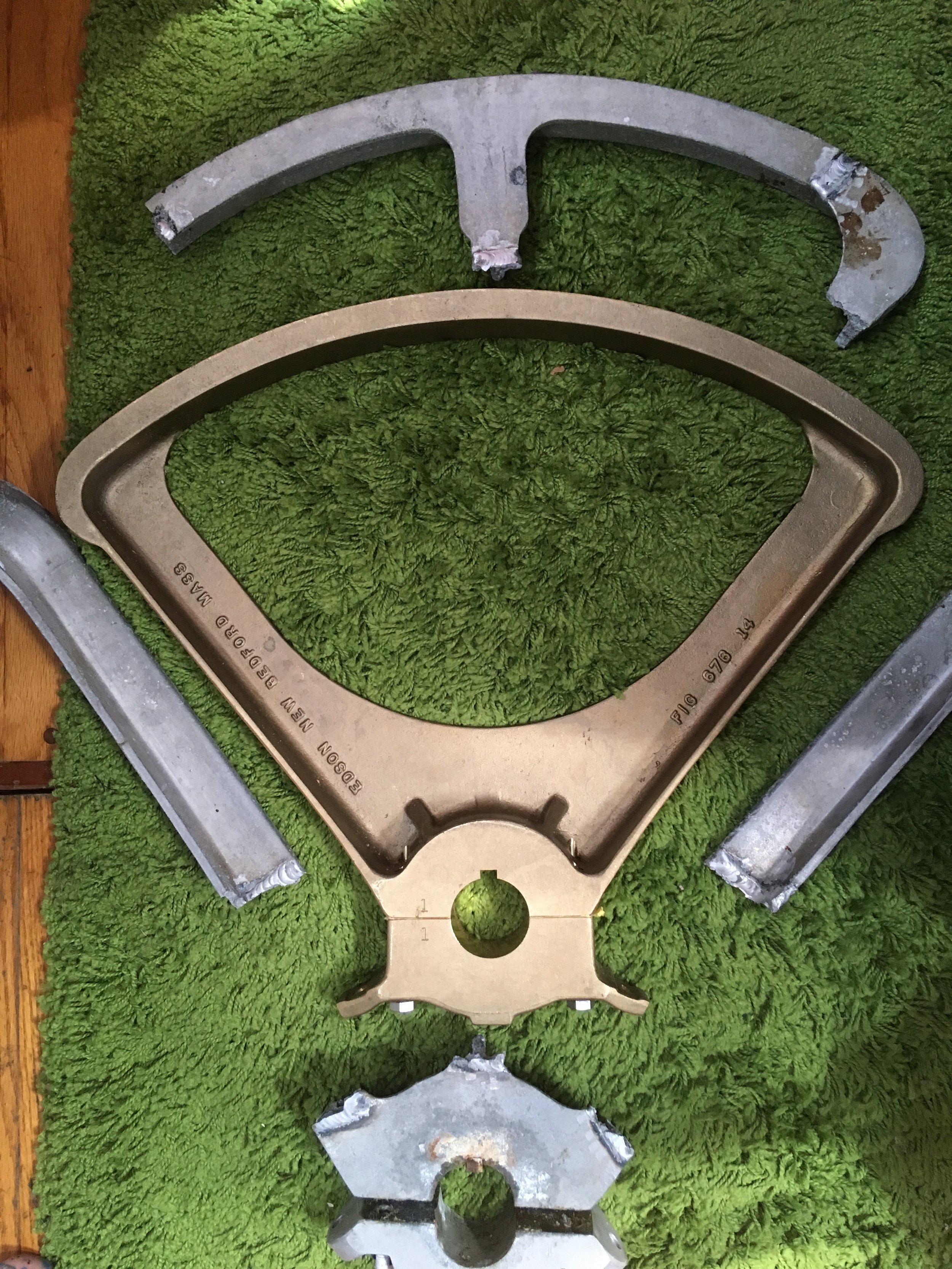Aluminum quadrants are lighter in weight, but much more fragile. They have a tendency to shatter into pieces if the rudder is hit hard in a grounding. Bronze rudder quadrants, while heavier, are much more resilient in these situations, making them a much better choice of quadrant materials if you are planning to go offshore.
Cable steering is simple to maintain and repair, once you understand how it works. If your first time seeing it is after something has broken, you might find yourself looking at a complicated spiderweb of slack cable and broken parts!
The last common steering system that utilizes a wheel is hydraulic steering. This system is the most convienient from an installation standpoint, giving you complete freedom of wheel placement with regards to the rudder post, but the worst system from a reliability standpoint. Hydraulic steering uses hydraulic pressure to push the rudder around, and relies on the airtight seal of the hoses, as well as all the connections and pumps involved in the process. If the system fails, you will need specialized equipment to repair and replace the damaged sections of hose as well as a very good understanding of the system to trouble shoot the whole setup.
Now, what if you are out at sea and everything that could go bad does. Whatever steering system you have fails and your rudder falls off! You venture into your lockers to find all your spares and everything you have related to steering falls overboard! Now what?!
Well, there are two simple options. One requires you to carry an item before you leave port, the other will be available from parts on the boat at the moment.
If you carry a sculling oar, you can use the oar as a separate rudder steering system. The oar on its side off the stern of the yacht will give you the ability to steer your yacht just like a tiller on a rudder. Naturally, this setup only works if you have a sculling oar.
The other option is to use spare lines and create a steering device out of them. A long length of line will act as a drogue in the water and provide resistance and pull in that direction. Tying a mass of line to a bridle system led to each corner of the stern will let you pull the tangle of line to port or to starboard. When you pull it to starboard, the drag will cause the yacht to pull to starboard. When you pull it to port, the drag will cause the yacht to pull to port. This gives you steering, but at the expense of a lot of speed. If you put too much line out, the drag will slow you down too much. Too little line and the drag will be insufficient to steer you properly.
These were all situations where your steering fails, but who wants to steer all the way across an ocean? Why not turn on the autopilot and relax! Well, autopilots can fail too. Electronic autopilots can fail because of electrical reasons as well as mechanical reasons. Wind steering systems can fail because of mechanical reasons. Having the materials on hand as well as the expertise to fix the system you have is critical to being able to depend on the system to get you to where you are going. On our passage, our wind steering system began to suffer from chafe, and sacrificial chafe protection needed to be applied and reapplied to the control lines. We also had a shiv seize up and need to be serviced to restore proper steering, as well as have our aluminum rudder quadrant shatter in a grounding in North Carolina.
You might be wondering about "Emergency Tillers" and why they have not been mentioned. The reason is, not all boats have them, and those that do tend to go ignored. Almost every person I have met who has an emergency tiller admits to having never tried it out. They had no idea how to set it up or use it. I myself was guilty of this, so before we set off on our big cruise across the Atlantic, we tested and set up our emergency tiller (who had lived in a locker for the past half century). As it turns out, we would have been in big trouble had we needed it out at sea as we were missing a large and important bolt to connect the tiller to the top of the rudder post. Thankfully, we were still in the United States and walking distance to a West Marine where I was able to procure myself this crucial bolt.
This makes us part of a tiny population of cruisers who have an emergency tiller and have tested the setup, making sure they know how to use it. If you are going offshore, it would be a great idea to join this small group of sailors who are truly prepared.




